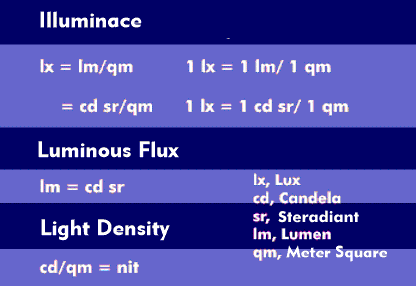light density
The term luminance is one of four basic quantities of lighting technology. The others are luminous flux, luminous intensity and illuminance. Luminance is used in lighting and display technologies.
Luminance is the intensity of light in relation to a unit area, expressed in candela per square meter( cd/m2). It is the visible light emitted by a light emitting diode or a display in a certain direction or reflected by bodies.
Radiation can be caused by emission, as in the case of active display technologies, for example the TFT display, OLED display, QLED display or plasma display, but it can also be caused by reflection, as in the case of the LCD display.
As for the luminance in daily life, the luminance between that of a starry sky and that of direct sunlight has a range of about 15 powers of ten. The starry sky has a luminance of 0.000 001 cd/m2 and direct sunlight has a luminance of about 1 billion cd/m2. In between are, among others, the luminance of moonlight with less than 1 cd/m2 and that of the interior lighting of rooms with about 100 cd/m2.
Luminance is also frequently expressed in nits. This is the specification commonly used in the USA, derived from the Latin word nitere, which means to shine. The nit refers to the luminous intensity, expressed in candela (cd) in relation to a unit area: 1 nit is equal to 1 cd/m2. In addition, the obsolete dimensionfootlambert( fL) is also used in the USA for luminance. Where 1 footlambert is equal to 3.426 cd/m2 or 3.426 nits. Previously, luminance was expressed in apostilb (asb). 1 apostilb is equal to 0.31831 cd/m2.

